Transforming A Dysfunctional Legal System
I started law school in 1987. I was 29 years old and married with a blended family of seven kids at home. We were politically and socially active, making a difference in our community. My husband was sometimes arrested for civil disobedience and it seemed that there was always a family law issue.
As one of the first members of my extended family to go to college, I didn’t know much about law school. I’d seen “Perry Mason” and was sure that I was way too shy to stand up in front of a jury. Being in a transactional practice, doing wills and closing real estate deals didn’t change the world and thus didn’t interest me. I wasn’t sure I wanted to practice law, but I knew that my complex family needed a lawyer.
I was prepared for hard work and dove into the experience. I commuted 40 miles each way, worked full-time in our family business, raised my family, stayed active in the community and somehow managed to study. I joined a group of students working to bring an ACLU chapter to the law school to help fight for civil rights. I became a volunteer Guardian Ad Litem, advocating in court for the best interests of abused and neglected children. I started a support group for Parents At Law School (PALS).
All law students are smart people. I expected to make good grades and I did pretty well, especially with everything on my plate. One day a fellow student came to me and said that I was working too hard, showing up as being too good, and he thought I must have too much time on my hands. He knew our family business was a cash-based business and he thought maybe the Internal Revenue Service would be interested in looking at our books. He told me that he’d called and filed a request to investigate us.
It was my first taste of the ugliness of the legal culture. It was at least twenty years later that I realized that my fellow student’s actions were instigated by competition with me.
Before I graduated from law school, I was divorced. I had gone from a teetotaler to someone who drank to relax on weekends. I was stressed and probably depressed. I’d stopped reading for pleasure and I had decided that I never wanted to be a lawyer, that all lawyers were jerks.
A Broken System
I thought my experience with law was personal, but I’ve since learned that in the late 1980s and early 1990s research was already beginning to explore just how dysfunctional the legal system was becoming. Many law students went to law school to make a difference, but by the second semester of second year had shifted to focus on making money and extrinsic measures. In general, lawyers have rates of depression that are two to three times higher than the general public. Divorce, addiction and suicide rates are much higher than average. We are a profession not happy with ourselves, and the public is generally not happy with us either. Lawyers and politicians have low levels of public trust. What other profession has a whole genre of jokes that belittles it? Divisive political battles mimic courtrooms where polarization is part of the game. Bar associations in many states have published guidelines for civility, though headlines provide plenty of evidence that lawyers are neither civil nor focused on resolution.
The decades since I graduated have been some of the worst for the profession. Big Law firms are scrambling for business, merging with past competitors and hiring fewer new associates. Law grads leave school with an average of $108,000 in debt. About half of 2012 law grads are not working in law at all. One wonders if this is good news or bad given that a recent career survey found that associate attorney is the unhappiest job. Many blame the tyranny of the billable hour, measuring time in six-minute increments, competing with colleagues for the most billable hours and promotions. Law schools are under attack for not turning out practice-ready lawyers, applications are down at almost all law schools, and even President Obama suggested that the third year of law school may be a waste of resources.
All of this plus substantive law can’t keep up with societal change. Old systems are not responsive. Precedent changes slowly and life is changing fast.
It is no wonder that many are leaving the profession. And I almost didn’t even start.
Not everyone flees the broken system.
After law school, I continued to work for social change. I was the director of a domestic violence program and worked at nonprofits addressing hunger. Just to prove that I could, I passed two bar exams, but I adamantly didn’t practice law and even moved to a state where I wasn’t licensed.
In November 1993, I was in a seminar when a tall, distinguished man stood up. He introduced himself to the classroom: Forrest Bayard from Chicago, Illinois, a lawyer whose practice was focused on divorce and making sure that everyone was granted dignity in the process and husband and wife could be friends and co-parents after the divorce.
I recognized a new paradigm when I heard it. Within a few months, I had passed another bar exam and was on my way to practicing law.
I soon learned that the type of practice Forrest was describing had a name: Collaborative Law, the brainchild of American lawyer Stuart Webb. Stu was a family lawyer who grew weary of the polarization and nastiness of divorce trials. His Buddhist principles of do-no-harm didn’t align with doing battle in courtrooms, destroying families and harming children. So after considering whether to leave law completely, he instead invented a new way of practicing law, a respectful process for healing conflict in divorces.
Though many versions of Collaborative Law have emerged, some with multidisciplinary teams of professionals working together to help families, the basic requirement is a signed agreement with husband, wife and their lawyers agreeing to work together, focusing on settlement. If they can’t resolve the case out of court, the lawyers resign and the husband and wife start over with litigators. The possibility of withdrawal and starting over is a huge incentive for everyone to roll up their sleeves and work hard, so most collaborative divorces do resolve outside of court.
I also learned that Stu’s idea was developed at potlucks with local lawyers. He often describes how hardened litigators came to potlucks, casseroles in hand, and after breaking bread together were more inclined to focus on resolution when they next met their adversaries in the courthouse. The potluck community led to a cornerstone of collaborative practice: practice groups that focus on building community, learning together and helping families.
When I opened my new practice, I was excited to become a collaborative lawyer. Instead, I ran squarely into the old paradigm legal system. Alongside learning about the new paradigm of law, I escalated my study of systems thinking, organizational development and social transformation.
My law practice became a laboratory of new models of practicing law. I developed friendly relationships with my colleagues. I learned about restorative justice, the many forms of mediation, holistic law, therapeutic jurisprudence, creative problem-solving and a dozen other approaches. I experimented with different business models. I offered flat rates rather than hourly billing. I hired a social worker to work with clients and offered support groups for clients and their children. I talked with my clients and we connected. Sometimes I hugged them and they hugged me.
I soon learned that working with intimate issues in my clients’ lives required me to do my own inner work. Doing my work helped me to facilitate my clients’ work in resolving conflicts. I developed my empathy and compassion. Identifying and living in alignment with my own purpose and values gave me a context for the work in the broader legal system. My own personal and spiritual growth were prerequisites for the new paradigm of law.
In the early days before the Internet, I used old-fashioned research tools to learn about alternatives to litigation. By 2000, I had collected what I’d learned and posted it online, empowering others with the tools to change their practices. The web wasn’t crowded in those early days and soon thousands of visitors found the site and my phone began ringing. Day after day, I heard lawyer after lawyer say, “I thought I was alone.”
Nowadays, I can look back and explain what I did in organizational and systemic transformation terms. Then, it was an intuitive mission. I became the hub of a wheel, connecting with kindred spirits and having thousands of conversations with lawyers, law students and judges and introducing them to each other.
In 2007, I attended a dozen conferences, including Humanizing Legal Education, Collaborative Law, Restorative Justice, Sacred Activism, Lawyers as Peacemakers, Holistic Law, etc. I was on planning committees for eight of the conferences and spoke at most of them. Each conference appealed to a different segment of the community, but I could see the common threads and I realized that the time was ripe to weave them together. I bought a video camera, gave up my house and my law practice and went on the road to become the weaver. I thought I’d be gone for about three months. It has now been more than five years.
The Emerging System
If we ever meet over a cup of tea, I’ll tell you many stories of adventures and new friends. I’ll talk about living in the gift economy, about synchronicities and miracles that you might not believe, though I promise they happened just that way. For now, I want to share about some of the most exciting and interesting lawyers around the globe.
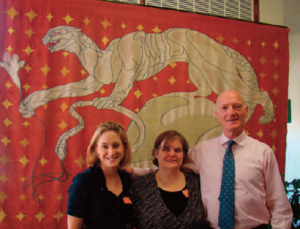
Some chose to reform the old system while others stepped out of the paradigm completely, generating new approaches. These stories are examples. I’ve already written one book of stories and could (might) write three more.
Integrative Law: The Umbrella Term
The emerging paradigm in law has been called by many names. In many cases, the same model was spontaneously created by more than one person at the same time. Each pioneer chose a name that resonated for him or her. A few years ago, a gathering of leaders from across the movement met to find an umbrella term for the movement and came up with Integrative Law.
Integrative Law is an emerging movement, beginning to define itself. We’re moving from isolated cells to a community of practice, exploring what we say about ourselves and who else fits within our label.
No one knows how many integrative lawyers there are and not everyone who is trained in collaborative or restorative (or the other types) is necessarily integrative. It is possible to follow a script without shifting the way of being that reflects the shift of paradigm.
From my perspective, the cornerstone of the integrative law movement is that the integrative lawyers do their inner spiritual and personal growth and integrate that inner work with their outer work. The toolbox includes skills like nonviolent communication, powerful non-defensive communication, empathy, compassion, values, purpose and commitment to integrity, transparency, healing, peacemaking and relationships. It is holistic and often interdisciplinary. Sometimes it is about healing conflict and sometimes it is about creating a solid agreement that establishes a container for preventing conflict.
Alternative Dispute Resolution
While we don’t know how many of us there are, we do have some measures. Many of our approaches fall within the field of Alternative Dispute Resolution. The American Bar Association Section on Dispute Resolution has 19,000 members. (The Litigation Section has about three times as many.) Jim Melamed of Mediate.com, the largest mediation site in the world, believes there are about 50,000 mediators in the world, the majority of whom are lawyers. Tens of thousands of lawyers have now been trained in collaborative law, which has attracted family lawyers around the world. Italy just passed a law requiring collaboration as a prerequisite to any civil litigation. Several states have legislation that codifies collaborative law and mediation.
Contemplative Practices
The ways they incorporate their inner work are as varied as the lawyers. Contemplative practices and law have become commonplace. Conferences on contemplative practices and law now draw hundreds of attendees. Houston lawyer Kristin Scheel was an oil and gas lawyer in a stressful job. She took up yoga to relieve stress and soon became a yoga teacher. When she left the law firm a few years later, she opened her own combination of law firm and yoga studio. Arizona Court of Appeals Judge Donn Kessler practices and teaches meditation to lawyers. Scott Rogers teaches courses in mindfulness meditation to law students at the University of Miami Law School.
Problem-Solving Courts
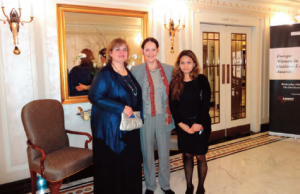
Integrative law seeks best outcomes for clients and broader society. It often integrates elements of the old legal system with new ideas and perspectives. For example, there are over 2,500 drug courts in the world. The judges who created the first drug courts saw that the old system of putting offenders in jail for drug addiction didn’t work. They modified the courts to focus on healing and resolving the underlying problem. They brought in the expertise of addiction specialists, social workers, and even neuroscientists to get to the underlying issues in addiction. The new models have saved millions in taxpayer dollars and have returned productive citizens to their families and communities.
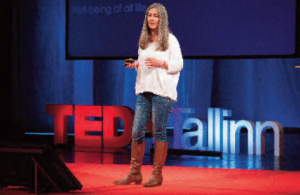
Drug courts focus on resolving the underlying issue of addiction. Other problem-solving courts focus on domestic violence, driving while intoxicated, homelessness, veterans with PTSD, and many other recurring issues. They have broad-reaching impact. Let’s say that Doris is a drug addict. She is the single mother of two children. She used to have a job, but her addiction has taken over. In desperation, she steals her neighbor’s checkbook and forges checks to get cash to buy drugs. When she is arrested, her children go to foster care. If she goes to jail, she may never get them back and chances are she won’t get off drugs in jail. When she comes out of jail with a record, no job, no place to go, and no children, she is likely to return to prison, a revolving door.
Instead, Doris is given the opportunity to participate in drug court. She is helped to get into a rehab program. She comes to court often, being recognized for her successes and encouraged to stay clean. Caseworkers help her get a job and find a place to live. With their support, she kicks the drug habit. Her children are eventually returned to her. After 18 months in the program, she attends her graduation. Her family and friends come to celebrate with her… maybe even that neighbor whose checkbook she stole.
Drug courts have been so successful that recidivism rates are dropping and some states have closed prisons for lack of inmates. Drug courts cost less than incarceration. The long-term impact on the children being raised by a functioning mother rather than in foster care is priceless.
Shift to Purpose and Values
As more than one have told me, “I woke up one morning and I couldn’t do it the old way; I had to find a new way to practice law that aligned with who I am.” They are the lawyers whose purposes and values didn’t fit the old paradigm. Rather than leave, they’ve created something new based on their own purpose and values.
Marque Lawyers in Sydney, Australia was founded by lawyers who had reached the peak of successful careers, only to find that they were not happy. They left their traditional firms and created a new law firm with the purpose of happiness. One of the first things that was on their to-do list: doing away with the billable hour. The centerpiece of their office is a coffee bar. There is no corner office. Rather, office spaces are assigned by lottery.
Estate-planning lawyer Sean Mason of Santa Barbara, California was doing some personal growth work when he created his purpose as Love. He began to tell people that the purpose of his law firm was to help his clients show their love for those who are most important to them. He earned 70% more money the first year and greatly improved his quality of life and the lives of his clients.
Linda Alvarez of Half Moon Bay, California is an artist and former actor. Linda represents creative people like best-selling authors and filmmakers. She practices non-violent communication and was looking for a way to bring it to her law practice and to write contracts that create sustainable relationships. She created a process that she calls ‘Discovering Agreement.’ She begins each contract negotiation with a letter that says something like, “This is who we are, what is important to us, and how we want to work with others.” She asks the publisher or other party to create the same sort of document for themselves. They share their individual missions, visions and values, then create a shared vision and mission for the contractual relationship. These elements are recited in the written contract, providing a foundation and guiding core concepts that get revisited to restore the peace when change happens or a conflict arises. That is, the parties are constantly truing themselves up to what is most important to them.
Sharing Law
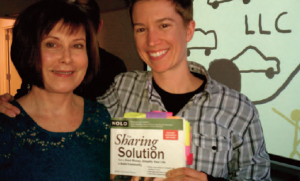
Janelle Orsi is the author of The Sharing Solution: How to Save Money, Simplify Your Life & Build Community and calls herself a ‘sharing lawyer,’ an area of law she invented right after law school graduation. Sharing Law supports legal approaches to living together in thriving, interactive communities. Her first book, published by NOLO Press, includes legal advice and forms for those who wish to create neighborhoods where people share cars, live in intentional communities, start tool libraries and create cooperatively owned businesses. Last year, the American Bar Association published her second book, Practicing Law in a Sharing Economy. It has become an ABA best-seller.
Earth Law
Many lawyers who explore what is most important to them find themselves with concerns for the Earth. As barrister Polly Higgins says, “The Earth is in need of a good lawyer.” South African Cormac Cullinan, an international environmental law attorney and consultant and the author of Wild Law: A Manifesto for Earth Justice, proposes recognizing natural communities and ecosystems as legal persons with legal rights. For example, in a landmark agreement signed in New Zealand last year, the Whanganui River has become a legal entity with a legal voice. If corporations can be people, why not rivers?
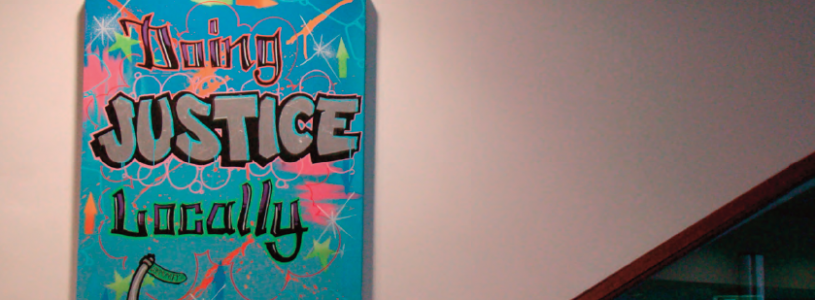
Why Should Non-Lawyers Care?
These lawyers are examples of a new breed of Integrative Lawyers who are transforming themselves and the law. Like integrative medicine, integrative law seeks to bring together the analytical, evidence-based approaches with the emergent humanistic, caring and healing approaches. Lawyers are political and social leaders who can wreak havoc or bring calm and certainty to uneasy situations. They can creatively solve problems or stand in the way of progress.
Law provides the foundation for relationships. It defines the social contract and helps to govern, define and end relationships.
It has been said that the role of doctors is to heal the body, ministers to heal the soul and lawyers to heal relationships. What if lawyers were peacemakers? What if you took your hardest problems to a lawyer to be solved? And what if you could count on receiving compassionate listening from your lawyer? What if lawyers saw themselves as agents of transformation, helping their clients heal their conflicts? How would such a legal profession change the world?
This article was originally published in the Fall | Winter 2013 issue of Kosmos Journal. It can be downloaded as a PDF here.
